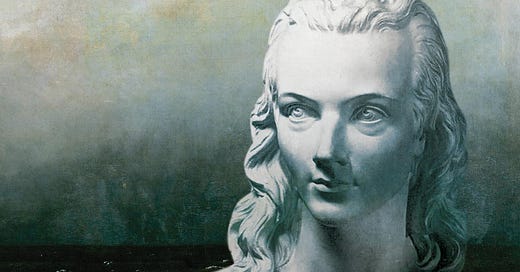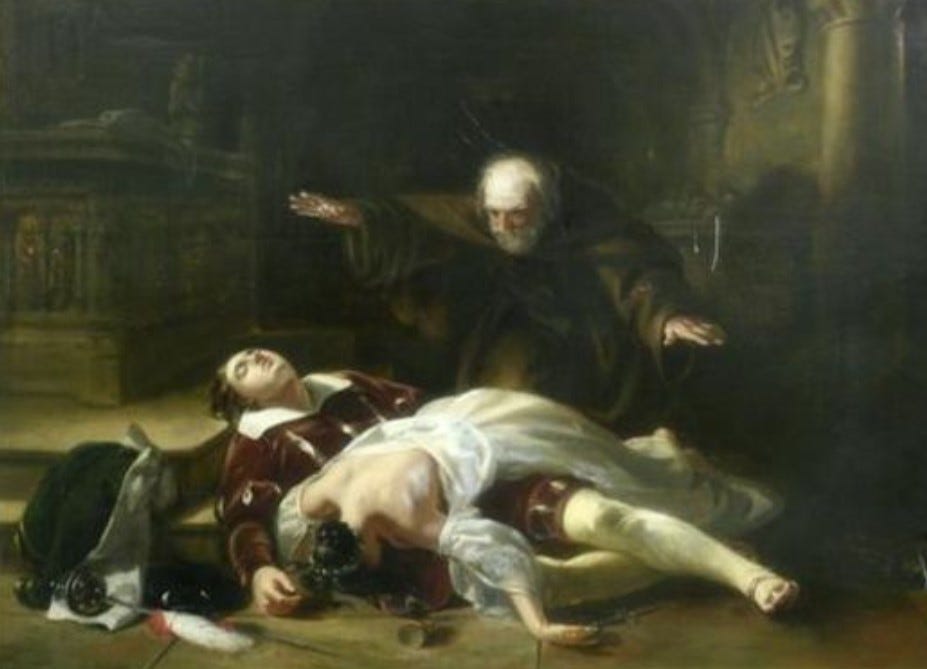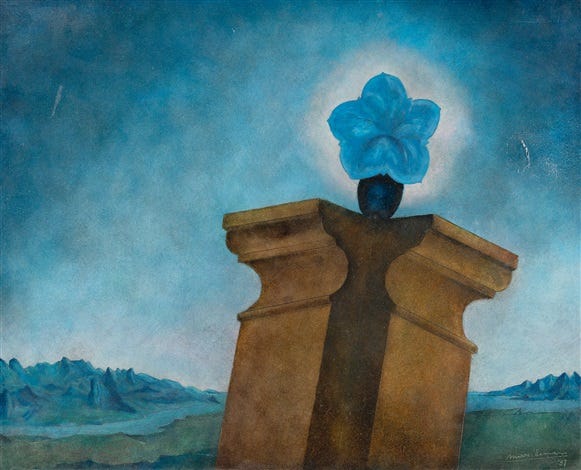“Standing lone, he’s downward cast, who loves with pious heat the past.”
What if you were told that Scott, Byron, Wordsworth, Coleridge (even Dickens!) and all the greats of the Romantic tradition represented Catholic reaction, knowingly or not? That Romanticism as a cultural movement was founded on reactionary thought and Catholic impulse?
Indeed, Christopher Dawson (The Gods of the Revolution, 1972) argues that all early Romantics were inspired by the idea of spiritual counter-revolution. They were enemies of the Enlightenment, and admired the Medieval age and the Catholic religion. Many of them even converted to the old faith. The men at the time saw it clearly: Romanticism is a pro-Catholic movement, inspired by traditional Christianity.
This reality caused a conflict within Romanticism, especially with later Jewish Romantics like Heinrich Heine, as well as decidedly Protestant Romantics like Schleiermacher. Such counter-voices had a strong influence in making Romanticism wane towards the end of the century.
For it turned out to be quite impossible to separate Romanticism from Medievalism and Catholicism, without damaging the inner logic and vigor of the movement. Dawson points out that the question is not simply one of aesthetics, but of a spiritual attitude. Romantics all share the mystical Catholic goal of “enlarging the kingdom of the human mind by transcending the limits of ordinary consciousness.”
Our conscious minds may be pictured as a little circle of light in the middle of pitch black darkness. The rationalists and the realists are careful to stay at the center of the spotlight, ordering their lives as if this little speck of light was the entire universe. Romantics, inspired by the Christian worldview, were not content with this quite literal narrow mindedness. Dawson argues that when this philosophical essence of the movement is correctly understood, we shall find that the most profound of the Romantics was the German poet Novalis, whose vision is now (as it was then) considered uncomfortably reactionary.
Desperate attempt
Behind the pseudonym Novalis was the young nobleman Georg Philipp Friedrich Freiherr von Hardenberg (1772-1801). Born in a pious protestant family he received a religious upbringing and the worldview stuck, though it became more mystical and pro-Catholic with age. His short and intense life was archetypal for great Romantics. Among his lasting achievements was the image of the blue flower, symbolizing the grasp toward the infinite or the unreachable. It became a key part of the visual language of Romanticism.
In his early twenties Novalis fell passionately in love with a 12 year old girl called Sophie, and got engaged with her a year later. After two years the girl died of tuberculosis, and Novalis was crushed by sorrow. Death thus became a major theme in his work. It is probably no coincidence that Shakespeare’s Romeo and Juliet was a play of special significance for Novalis – as it focuses on a 13 year old heroine, who dies tragically before getting to experience marital bliss with her dear Romeo.
What followed the tragic turn were a few years of intense work, both professional and creative. But the poet’s life was soon cut short by the same disease that had claimed the love of his life.
Besides his poetry, Novalis showed talent in philosophy, and one of his most insightful works is an essay called “Christendom or Europe?” (1799). The work is written in a flavorful, poetic style, and functions as a key text for establishing the connection between reaction and romanticism. Many modern liberal scholars have made brave attempts at saving Novalis from the brand of “reactionary”, but any such attempts appear quite desperate after observing what the man actually wrote both in his poetry and in his philosophy.
An early sign of the essay’s true nature is the tumult it caused in Novalis’ intellectual circle: so stark was its Papism and reactionary ethos that Schleiermacher balked. Schlegel thought ill of it. Goethe opposed its publication.
Why such a stir? And why the are attempts at liberalizing and modernizing Novalis so doomed to failure?
1) Novalis represents medieval clergy as “heavenly people who by devotion and faith in the blessed mother and her sweet, heavenly child, stood firm against the temptations of the earthly world and won divine honor, now serving as protective powers for their brothers, willing helpers in need, intercessors in human frailties, and friends of humanity before the heavenly throne.
They were the experienced helmsmen on the great unknown seas, in whose custody one could despise every storm, and be confident of safe arrival and landing on the shores of the true fatherland.”
2) He has nothing but sympathy and love for the veneration of relics.
3) He praises papal power, admiring how “Princes laid their disputes before the father of Christendom, and their crowns and glory willingly at his feet.”
4) He praises the censorship exercised by the Church, pointing out how “The wise head of the church justly opposed insolent developments of human dispositions and untimely, dangerous discoveries in the domain of knowledge that came at the expense of the sense of the sacred.”
5) His vision is centered on Rome: “All treasures flowed there, the destruction of Jerusalem was avenged, and Rome itself had become Jerusalem, the sacred seat of divine rule.”
Even after all this, some critics still argue that Novalis can’t be a real traditionalist or proponent of reaction, because he doesn’t claim one can return to the past. After all, he says that the Catholic religion was “torn to pieces forever by a large number of Europeans.” And that “progressive, ever expanding evolutions are the stuff of history.”
First of all, it is a laughable straw man to imply that reactionary thought means believing one can build a time machine. Of course time only moves one way: the idea is to resurrect values from the past, and to make the future conform better with what is perennial.
Another problem with the liberalizing attempt is that that whenever Novalis talks of the death and destruction of old religion, he soon after talks of its resurrection. And need we even point out that the traditional Catholic idea includes the understanding of progressive revelation and God’s continuous work in the world. No Christian believes that history has ended. It is part of the Christian understanding of history that things change: commonly for the worse, but sometimes for the better. This is part and parcel with the reality free will and divine providence.
The coming of a self-grinding mill
Like most reactionary thinkers, Novalis traced the problems of modernity back to Luther and the Protestants: “They forgot the necessary result of their actions; they separated the inseparable, divided the indivisible church, and impiously tore themselves loose from the universal Christian community, through which alone genuine, lasting rebirth was possible.”
As a consequence of the Protestant Revolution, religion was confined within secular state boundaries and this undermined the “cosmopolitan religious interest” which had been the source of European coherence. Church thus lost its influence as a peacemaker and its role as the unifying principle of Christendom.
Novalis also takes issue with the Protestant decision to separate the Bible from tradition and the Church:
“Luther generally treated Christianity in an arbitrary fashion, misjudged its spirit, and introduced another religion with another letter, namely the sacred universal validity of the Bible. It was disastrous for the religious sense, since nothing destroys its sensibility as much as dead letter.”
On the other side Novalis depicts the flexibility, width and substance of the Catholic church, its councils and its Pope, along with its wisdom in keeping the Bible as something more esoteric and mystical.
Dividing the Bible from this harmonious context led to internal weakness, and the stubbornness of the whole pursuit has led to an absurdity: “Through the continuation of so-called Protestantism, something thoroughly contradictory was declared: a permanent revolution.” This echoes strikingly in the French Revolution, which Novalis had observed. There too the paradoxical ideal had been a revolutionary government lasting in perpetuity.
The era of Enlightenment had shown that what began as the Protestants’ personal hatred of the Catholic faith gradually turned into hatred of the Bible, of Christian faith, and finally of religion itself. Novalis describes how the men of the Enlightened era were always attempting to purge nature and the human soul of poetry. They wanted to destroy all traces of the sacred, to spoil the memories of edifying men and great events with sarcasm, and to strip the world of its color.
Hatred of religion also affected other object of enthusiasm: imagination, feeling, morality, love of art. In the new vision human beings were placed on the top of a pile of animals.
“The music of the cosmos was transformed into the uniform rattling of an enormous mill; a mill in itself driven by and swimming in the stream of chance, without architect or miller. A genuine perpetuum mobile, a self-grinding mill.”
In these insights Novalis prefigures C. S. Lewis and his men without chests.
Newborn the image of the father
Part of proper Romanticism is an air of optimism, of hope. Although Novalis’ works are steeped in the theme of death and sorrow for things lost, the vision he offers at the end of his essay is intensely hopeful.
“The time of resurrection has come. Precisely the events that seemed to be directed against revival and to threaten complete demise, have become the auspicious signs of regeneration. This cannot be doubted by the historical mind.”
This again refutes the liberal critic’s claim that Novalis only painted pictures of a sentimental past without believing they have any relevance for the future. Indeed, Novalis digs deeper, pointing out that such a spiritual revolution has a strength all earthly revolutions lack: a pull towards heaven which keeps it suspended at the peak.
His vision is of a better age, of the dead world reborn, new but perennial: “a new history, a new humanity, the sweetest embrace of a surprised young church and a loving God, and the ardent conception of a new messiah in his thousand members at once. Who does not feel hope with sweet shame? The newborn will be the image of the father: a new golden age with dark, infinite eyes, a prophetic time, a time of miracle-working and healing, a consoling time, igniting eternal life.”
What a great illustration of how the future can reflect the past, like the son reflects the father!
The benefit of traversing through the modern wasteland is that we now appreciate what we have lost. We can judge “the terrible products of religious sleep, those dreams and deliriums of the sacred organ, and for the first time properly see the importance of that gift.”
But if we disregard the key of Christ, we shall be left in the desert, locked in an an unending battle, where no side shall bend, since they all wield powers of the human heart.
Unfortunately, this is where Novalis gets his most weakest and most hazy, appearing to offer avenues for “cultural Christianity” as a valid option beside true, faithful Christianity: “Choose the one you want, it makes no difference, you become Christian in that way and a member of a single, eternal, happy community.”
What makes the position so hazy is that he soon appears to eat his words and reduce the options back to only one:
“Only religion can reawaken Europe, and install Christianity visibly on earth. The old Catholic faith was applied Christianity come to life. Its omnipresence in life, its love of art, its deep humanity, the indissolubility of its marriages, its joy in poverty, obedience and loyalty make it unmistakable as genuine religion.”
Removed is the stone
In his seminal six poem cycle, called Hymns to the Night (1800), Novalis illustrates many of the themes noted in his philosophical work. After depicting struggles with death for the first few poems, he turns to reveal his thinking on the Christian character of Europe and its history. And in a remarkable passage, Novalis illustrates the loneliness of the perennialist, of the man devoted to the ideals of the past, unwilling or unable to bend to modernity – distilling the aching ethos of the Romantic attitude to life:
“Alone and deeply distressed stands whoever ardently and devoutly loves the distant past.”
Novalis then proceeds to depict the joy of the noble pagans, who realized that finally the living Truth they had been grasping at had arrived in the world:
“You are the youth from ancient days
Who sat on graves so deep in thought;
A gleam of hope for darkened ways –
The joyful hint of heights so bright.
What sank us into mournful phase
Now draws us up with longing light.
In death was life eternal revealed,
You are the death that now has healed.”
The cycle culminates in the following realization:
“Removed is the stone–
Mankind has now arisen–
We now remain your own,
No longer feel in prison.
The sharpest care takes flight
Before your golden cup,
When life and earthly might
Give way in the last supper.”
Thus, the final solution Novalis offers to man’s struggle with death is Christ and his real presence.







